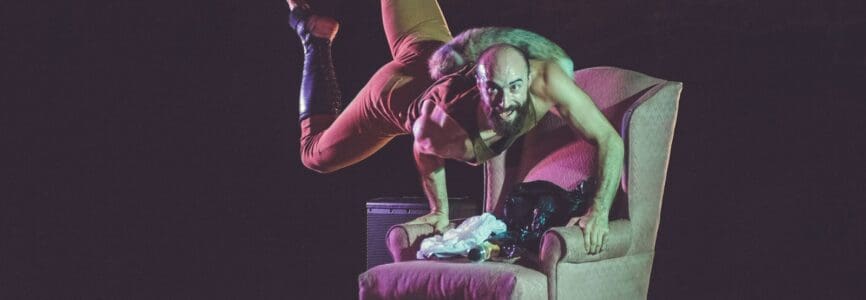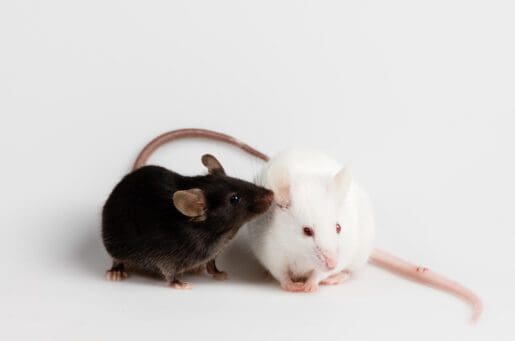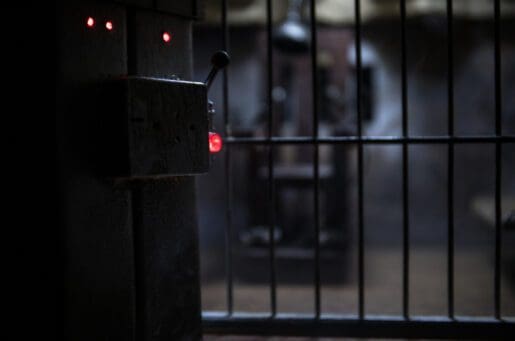Bioethics Forum Essay
Contemporary Circus Draws on Ethics to Support Diversity
Recent revelations about racial discrimination or sexual abuse in nearly every artistic or entertainment genre have been widely publicized. Even though the circus exists in the same world as theater and movies, it has been largely exempt from public criticism, apart from accusations of animal cruelty. But under the broad rubric of “contemporary circus,” this familiar entertainment genre is distancing itself from its past and creating a new and vibrant art form. And underlying this transformation is an ethical commitment to social justice, inclusion, and equity.
Contemporary circus is facing squarely its history of discrimination by creating explicit statements about respect and dignity for everyone involved in the enterprise. This is ethics at its most basic human level. Like any major societal transition, this process is ongoing. To understand the many forms this takes, some background is important.
For most of the 20th century, Americans were encouraged to think of the circus as one big happy family. There were seven Ringling brothers, some of them circus performers. Their circus merged with its major competitor, Barnum & Bailey, in 1919. Most smaller traveling circuses were family-owned, and many performers came from their ranks.
In the 20th century “running away to join the circus” came to mean leaving one family to join another, more understanding one, and leaving a boring town to travel the country and maybe the world. This is not what Noeli Acoba, a white and Filipino performer who specializes in aerial rope, encountered. She says in a video:
“I ran away to join the circus—a community that is known for welcoming EVERYONE . . . and found racist hiring practices instead. . . . [In 2019 she] created an aerial rope act as a response to those who told me my skin was too dark, my body type is not right, and that I would never become a circus performer.”
Largely for financial reasons and animal rights activism, Ringling Brothers Barnum & Bailey closed in 2017. (Some smaller traditional circuses are still active.) The contemporary circus, which originated in the 1970s and 1980s, is smaller, more intimate, more focused on character development and narrative than on spectacle. Domestic animals such as horses and dogs may be used, but it is unlikely that audiences will see elephants, lions, or tigers. As an art form, not just a show, producers may collaborate with other artists in opera and theater. Many circuses, such as the Contemporary Circus and Immersive Arts Center in Troy, N.Y., focus on building relationships with other organizations in their home community rather than traveling the nation by rail or truck.
Circus today is part of an international movement in the United States, Australia, Canada, France, and other countries. Partly because of the impact of the Covid-19 pandemic, there is no reliable estimate of the number of active contemporary circuses. The statements of purpose of many of these new circuses emphasize their commitment to inclusion at all levels. Circus Omnium in New York, an outgrowth of Big Apple Circus created by Lisa Lewis, chose its name because “omnium” means “of all; belonging to all.” “All” in this case includes people of color and LGBTQIA+ performers and those who have physical disabilities that in earlier circuses would have made them visible only as side show exhibits. Audiences have access to many forms of supported communication such as ASL, audio description, and other technologies.
Discrimination and other elements of a toxic work environment, long known but hidden, are coming to the surface. A 2020 survey of U.S. and Canadian circus employees conducted by Circus for Change, an advocacy organization, found that BIPOC (Black and Indigenous People of Color) respondents scored higher (agreed more) in altering appearance to “fit in,” being the only one who looks like them, feeling that they represent a certain racial or ethnic group, and scored lower (disagreed more) in having peers who look like them. These choices mirrored social values of earlier times; as times have changed, so have circus hiring practices. Many performers, particularly Black and mixed-race performers, are speaking out against discrimination and inequities, not just in hiring but also in obtaining grants and training opportunities.
Some organizations are taking data to a more assertive stance. The American Circus Alliance, newly formed this year, has a Code of Ethics for All Members that supports its founders’ commitment to “creating a space—virtual and in-person—in which all individual and members of ACA are treated with respect and dignity.” Ariele Ebacher, one of the cofounders and a tightwire performer and teacher at the New England Center of Circus Arts, told me in an e-mail, “This document is a product of both the time in which it was created and the people who created it. We wanted to preserve the spirit of mutual respect that had presided over our group thus far, and to ensure that those joining the ACA were similarly committed to respect as a foundational principle.”
Many organizations have aspirational statements about mission and values; few are as explicit. (Cirque du Soleil, the best-known contemporary circus, has a lengthy code of ethics that rejects harassment but is mostly devoted to protecting corporate assets.) Instead of simply saying “inappropriate behavior” is not permitted, the ACA statement lists examples. The full lists are here:
● “Threatening, intimidating, or hostile acts that relate to a person’s membership in any of the Protected Categories [protected by local, state, or federal laws];
● Using racist slang, phrases, or nicknames;
● Making remarks about an individual’s skin color or other ethnic traits;
● Making offensive gestures…;
● Making offensive references to an individual’s mental or physical disability;
● Sharing inappropriate images, videos, emails, letters, or notes…”
The statement goes on to describe in graphic detail harassment on the basis of sex. ACA states that it prohibits all forms of inappropriate, offensive, or harassing sex-based conduct including but not limited to the following:
● Touching, pinching, patting, kissing, hugging, grabbing, brushing against another employee’s body, or poking another employee’s body;
● Rape, sexual battery, molestation or attempts to commit these assaults;
● Subtle or obvious pressure for unwelcome sexual activities;
● Sexually-oriented gestures, noises, remarks or jokes, or comments about a person’s sexuality or sexual experience…
● Hostile actions taken against an individual because of that individual’s sex, sexual orientation, gender identity and the status of being transgender…”
This new activism does not in any way diminish the primary purpose of circus—the joy and awe it brings to audiences. The physical tent may be smaller or absent altogether, but the metaphorical tent is much larger and provides new opportunities for experimentation and creativity.
Carol Levine, MA, is a senior fellow at the United Hospital Fund in New York, a fellow of The Hastings Center, and a MacArthur fellow. She published “Clown, Professor, Writer” in Commonweal about Robert Lax, whose circus poems are the basis for Phillip Glass’s new opera, “Circus Days and Nights.”
Photo: Contemporary Circus and Immersive Arts Center, Troy, N.Y.












